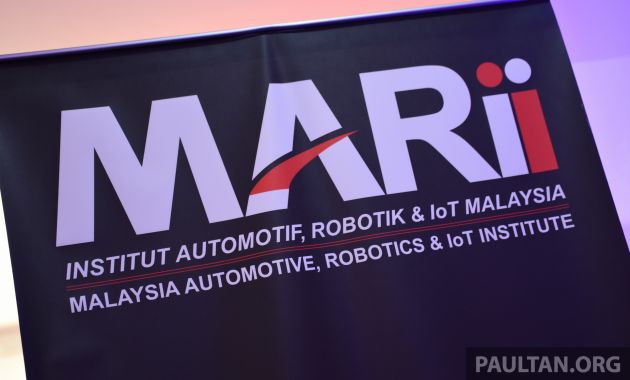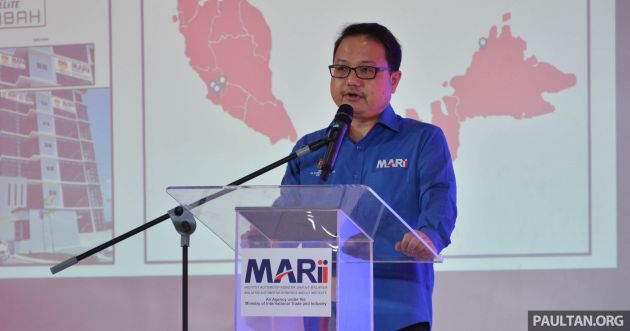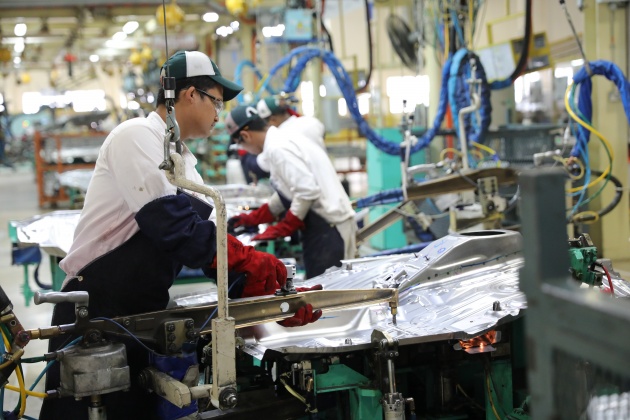The Malaysian automotive sector continued to be a significant contributor to the economy last year, contributing 4.2% to the country’s gross domestic product (GDP). Overall growth continued, and although the total industry volume (TIV) for the year surpassed that of 2017, other areas showed greater growtth potential, according to the Malaysia Automotive, Robotics and IoT Institute (MARii).
At its 2018 overview presentation earlier today, MARii CEO Datuk Madani Sahari revealed relevant numbers for the sector in 2018 as well as the outlook for 2019. He said that parts and components exports hit a historic high of RM12.1 billion in 2018, significantly up from the RM4.7 billion recorded in 2014.
Although the TIV and total production volume (TPV) increased to 603,664 units and 572,471 units respectively last year, the ministry of international trade and industry (MITI) agency said that the industry should be looking outwards and reducing its primary dependence on the domestic market, saying that this was small in the overall scheme of things. The motorisation rate, it added, was already at 348.6 to 1,000 people in 2017.

This year, both TIV and TPV is expected to grow by less than one percent, the projection being 605,898 units (0.37% gain) for TIV and 575,603 units (0.55% gain) for TPV. The contribution from parts and components is expected to climb to RM13.03 billion (a 7.69% increase) this year.
He added that remanufactured parts and components, which climbed to RM523.1 million in 2018, was a largely unexplored market with tremendous business potential. This is projected to improve to RM700 million in 2019.
Other key highlights included CBU vehicle exports, which rebounded from its decline in 2017 and breached the RM2 billion mark for the first time (RM2.08 billion) last year. This is expected to grow to RM2.5 billion this year. The institute believes that exports, including that of remanufacturing, will provide the best avenue of growtth in 2019 and into the future.
Last year, a total of 64,839 jobs were created in manufacturing and after-sales, although the forecast for this year will see a slightly lower number (59,942). Elsewhere, Madani said that the penetration rate for energy efficient vehicles (EEV) was 62% last year, and this is expected to increase to 70% in 2019.
The agency also shared an overview of upcoming projects and developments expected in the coming year. Among them are the establishment of lithium-ion battery manufacturing, not just for the automotive market – the project, when it takes flight, will make the country the first in the region to produce lithium-ion cells, and the aim is to make Malaysia the regional production hub for this.
Also expected to be established this year is an autonomous vehicle test-bed (AVTB) facility as well as an EV interoperability centre (EVIC) and a biodiesel application research centre, the latter working towards establishing eventual adoption of B15 and B20 biodiesel in the country.
Research on a host of identified national roadmaps is also on the cards, with topics including remanufacturing and mobility technology to after-sales service. Plans are also afoot to open new MARii satellite facilities, or centres of competency, across the country, these being in Kota Kinabalu, Langkawi, UiTM Shah Alam, UPM Serdang, UKM Bangi and UCTS Sibu.
Also present at the event was Ong Kian Ming, the deputy minister of international trade and industry. “The key figures presented today are a clear signal that the automotive industry intends to lead Malaysia’s drive towards emerging as a serious contender in the regional and global markets,” he said in his speech.
He added that the entire ecosystem must further transform to meet changing demands for future automotive products and services.
Source: Read Full Article




